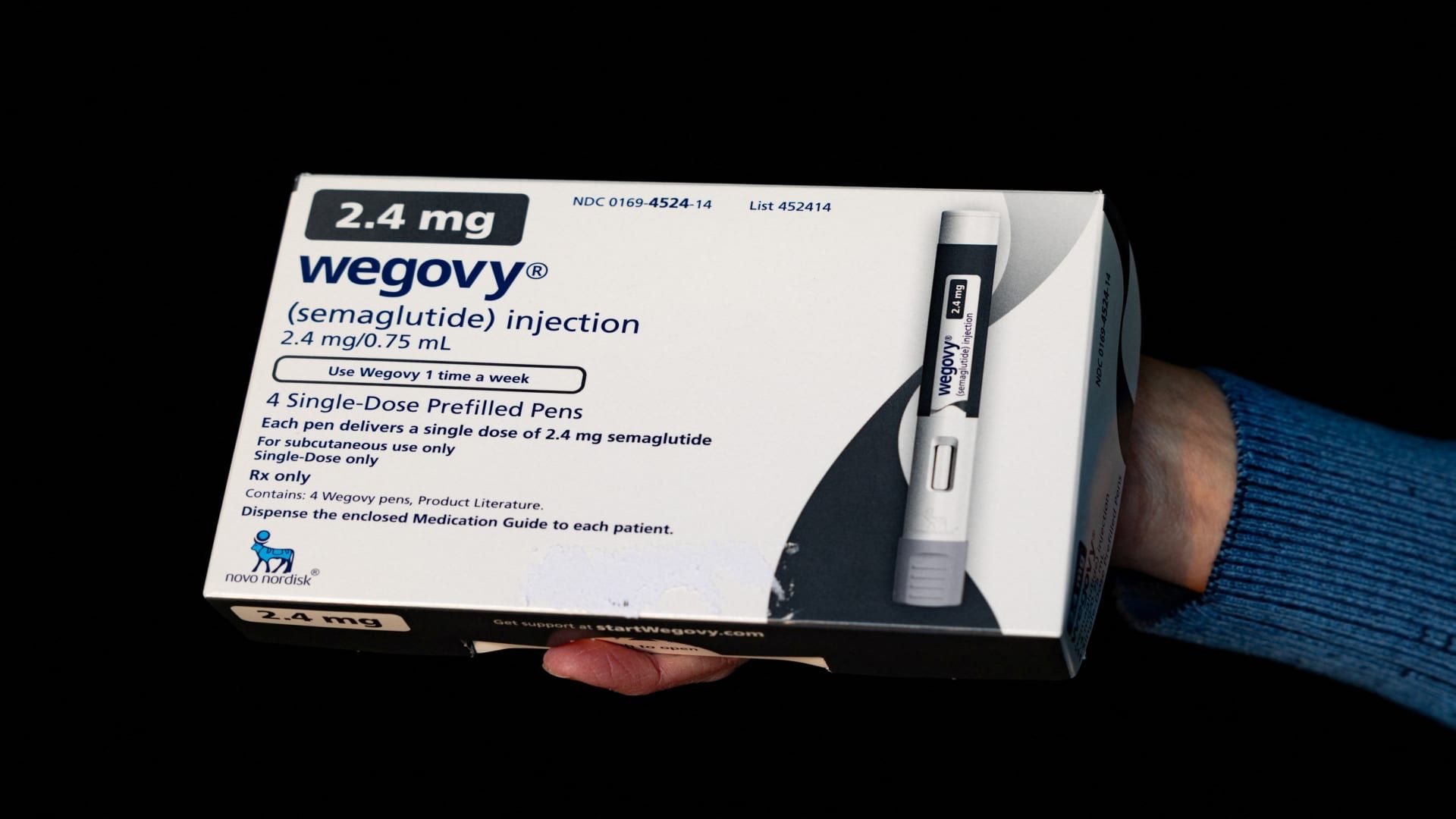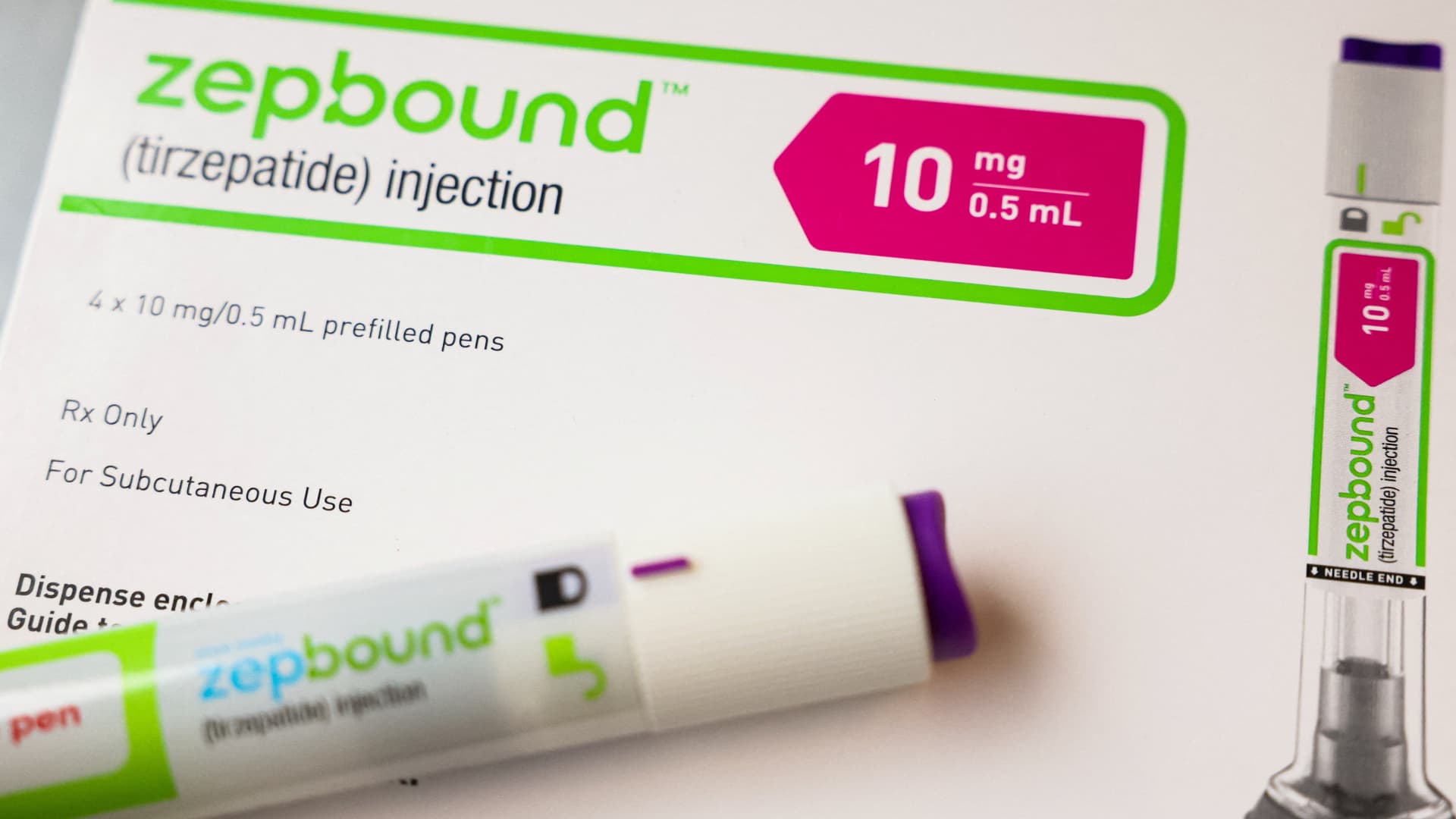Rebekah Carl poses with her Wegovy recipe in New Columbia, Pennsylvania, USA, November 13, 2023.
Hannah Beier | Reuters
Do you think a friend or colleague should receive this newsletter? Share this link with them to register.
Good afternoon! The use of one class of medications for diabetes and weight loss is more common than ever.
About 1 in 8 U.S. adults have used a GLP-1 medication at some point in their lives, according to a survey from health policy research organization KFF released last week. About half of those Americans, or about 6% of American adults, currently use one of the treatments.
That includes Nordiskthe weight loss injection Wegovy and the diabetes drug Ozempic, along with Eli LillyZepbound weight loss treatment and its Mounjaro diabetes counterpart.
The survey shows that a wide swath of Americans are taking these drugs despite intermittent shortages caused by relentless demand. The treatments have skyrocketed in popularity over the past year despite their high costs and limited insurance coverage.
Let's dig into some of the data.
Most adults, or more than 60%, who have used GLP-1 reported taking it in part to manage chronic conditions such as diabetes or heart disease. That includes 39% who took GLP-1 solely to treat a chronic illness and 23% who took one to treat a chronic illness and lose weight.
Meanwhile, 38% of adults who took GLP-1 reported using it specifically for weight loss.
Notably, GLP-1 use differed by race and ethnicity.
- About 18% of black adults have taken one of these medications.
- About 14% of Hispanic adults have used them
- About 10% of white adults have taken one of these medications.
Black and Hispanic adults in the U.S. have a higher rate of obesity than white adults, according to KFF's analysis of Centers for Disease Control and Prevention data.
There were also differences by age group, according to the survey.
Nearly 20% of adults ages 50 to 64 said they had taken GLP-1 before, which is higher than percentages reported by other age groups.
However, younger adults were more likely than those 65 and older to report taking a GLP-1 specifically for weight loss. KFF said that may reflect the fact that the federal Medicare program does not cover prescription weight-loss drugs.
Medicare can only cover weight loss treatments if they are approved in the US for an additional health benefit, such as treating diabetes and reducing the risk of heart disease.
But most adults, regardless of whether they have taken GLP-1, said they believe Medicare should cover the cost of prescription weight-loss and overweight medications, according to the KFF survey.
Still, more than half of adults with health insurance who have taken GLP-1 said their plans covered part of the cost of these drugs. Meanwhile, 24% said their insurance covered the full cost of the medication and 19% said they paid the full cost themselves.
This survey data could change in the future as GLP-1s gain approval for new purposes, such as sleep apnea and fatty liver disease, putting more pressure on health plans to cover them. Stay tuned for our coverage on the use of these medications.
Feel free to send any tips, suggestions, story ideas, and facts to Annika at [email protected].
The latest in health technology
Google DeepMind announces new AI model that can predict the structure of molecules
Pavlo Gonchar | Light rocket | fake images
Google on Wednesday announced a new artificial intelligence model called AlphaFold 3, which it said can illustrate the complex interactions and structures of “all the molecules of life.” The company hopes the model will transform drug discovery and biological research.
AlphaFold 3 predicts the shapes and behaviors of large biomolecules such as DNA, RNA, and proteins, as well as small molecules often used in medicines, according to a Google blog post. When the model is asked for a list of molecules, it can show how they all fit together by generating their joint 3D structure.
Historically, modeling molecules like proteins has been a challenging task for researchers. Google said experimental prediction of protein structure can cost hundreds of thousands of dollars and take years to complete. As a result, Google said AlphaFold 3 could help accelerate drug discovery and genomic research, and contribute to new scientific discoveries such as “biorenewable materials and more resilient crops.”
The model was developed by Google DeepMind, which researches and builds artificial intelligence systems, and Isomorphic Labs, which explores applications of artificial intelligence in drug development. Since AlphaFold 3 includes a broad group of biomolecules, it goes beyond the capabilities of AlphaFold 2, which can only predict protein structures.
DeepMind announced AlphaFold 2 in 2020. Since then, the model has been used by “millions” of researchers to develop cancer treatments, malaria vaccines and design enzymes, Google said.
AlphaFold 3 is able to predict interactions between proteins and other molecules at least 50% better than other existing methods, and the model doubled the prediction accuracy for other interaction categories, according to the blog post.
“We believe this new technology has the potential to be transformative for biological research,” Google DeepMind CEO Demis Hassabis said in a LinkedIn post.
Google said scientists will be able to access “most” of AlphaFold 3's capabilities for free through its new AlphaFold server. The company launched the server as part of its “ongoing commitment to sharing the benefits of AlphaFold,” the blog post said.
Researchers from Google DeepMind and Isomorphic Labs published their findings in the scientific journal “Nature.”
Please feel free to send any tips, suggestions, story ideas, or information to Ashley at [email protected].












